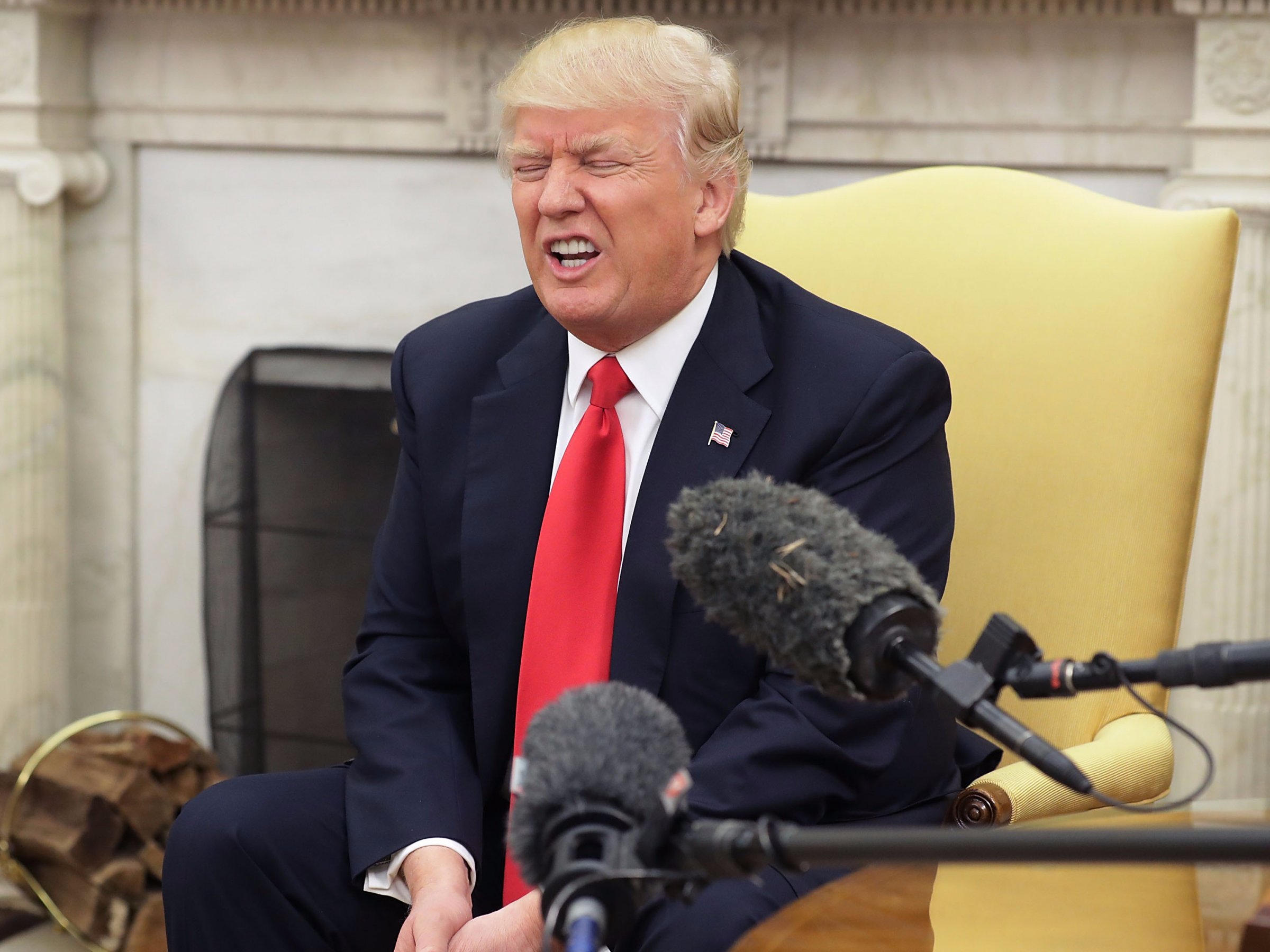
The Trump trade appears to have run out of steam.
In the weeks immediately after the election of Donald Trump, the possibility of lower taxes, decreased regulation, and economic stimulus kicked markets into high gear. Stocks ripped past all-time highs, bond yields shot up, and expectations for an increase in inflation started to kick in.
Over the month of March, however, the Trump trade seems to have slowed down as a mix of policy failures and outside economic events have begun to influence investors.
The slowdown
The large moves that came after Election Day seem to have slowed down across the board.
From the election on November 8 to Inauguration Day the S&P 500 and Dow Jones industrial average jumped by 6.2% and 8.2% respectively. Since the inauguration, the indexes have moved up just 4.2% for the S&P and 4.3% for the Dow. Those are certainly solid gains, but not the rip roaring market from after the election.
March, however, saw a break down for stocks. The S&P 500 fell 1.3% during the month and the Dow was down 2.1%. The month also saw eight straight down days for the Dow, the longest losing streak for the Dow since 2011.
Within the market there has also been a reversal for some of the companies impacted by Trump’s win. Goldman Sachs saw its stock rise 27.6% between the election and inauguration, but since January 20 the stock is down 1.1% and fell 9.1% since its price on March 1.
On the other hand, HCA Holdings — an owner of hospitals and healthcare facilities — soared in March. The stock collapsed post-election due to fears that the Affordable Care Act, better known as Obamacare, would be repealed and the number of visits could decrease. HCA fell 10.8% the day after the election and was still down 1.4% from its pre-election price on Inauguration Day.
But now, with the collapse of the American Health Care Act — the Republican plan to repeal and replace Obamacare — the stock has soared 11.5% since January 20. It’s now at its highest level since August 2015, and is approaching its all-time high.
The sell-off in bonds that started following the election has also slowed down. The US Treasury 10-year note yield was 1.8547% on November 8 and leapt to 2.4468% by January 20 (remember: as bond prices go down, yields increase). As of Friday, the 10-year yield dipped slightly to 2.3964% on Friday and fell as low as 2.3765% during March.
Currencies have made a similar reversal. The US dollar index jumped 2.9% between Election Day and the inauguration, but has slid -0.4% since then. The dollar fell 1.4% during the month of March. The Mexican peso, which collapsed after the election due to Trump’s policies towards the country, has similarly turned around.
Even expectations of inflation, which soared following Trump’s election, have begun to slow down since the inauguration.
Policy concerns and outside distractions
Most the concern over the Trump trade appears to be based on uncertainty about the ability of Trump to get his agenda through Congress.
The American Health Care Act was pulled from the House floor after Republican leaders realized that they did not have the number of votes needed to pass the bill despite a large majority in the chamber.
Trump’s inability to wrangle his own party has analysts concerned about the possibility that the president will be unable to move forward on other Wall Street friendly parts of his agenda like tax reform and repealing the Dodd-Frank regulation on financial institutions.
“During his campaign, President Trump laid out an ambitious agenda for economic policy,” Mark Doms, senior economist at Nomura, wrote after the AHCA’s failure in a note to clients. The failure to pass a healthcare bill “calls into question those optimistic assumptions about the capacity of Trump and the Republican-led Congress’s ability to pass complex, impactful legislation” according to Doms.
In addition to the policy concerns, other outside issues have cropped up in the economy to put a dent in the Trump trade.
The Federal Reserve raised interest rates for the second time in four months in March. “Hard” economic data that measures actual activity in the US has not matched the enthusiasm seen in “soft data” from surveys of investor, employer, and consumer sentiment.
All of those factors added together led to a rough March for those betting on the Trump trade.
NOW WATCH: 7 mega-billionaires who made a fortune last year













